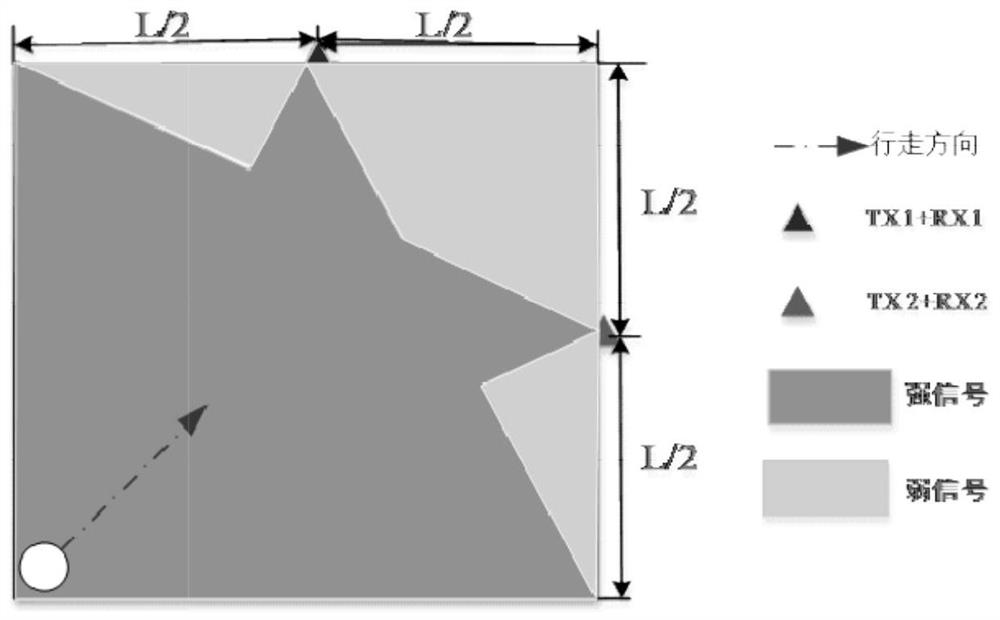Multi-device cooperative gait sensing and identity recognition method based on ultrasonic waves
A multi-device collaboration and identity recognition technology, applied in signal pattern recognition, character and pattern recognition, instruments, etc., can solve the problems of privacy leakage, expensive radar equipment, and difficulty in meeting the needs of identity recognition.
- Summary
- Abstract
- Description
- Claims
- Application Information
AI Technical Summary
Problems solved by technology
Method used
Image
Examples
Embodiment Construction
[0028] The above and other technical features and advantages of the present invention will be described in detail below in conjunction with the accompanying drawings.
[0029] Step 1: Bind two pairs of speakers and microphones together to form two transceivers, and deploy them at positions orthogonal to each other in the sensing area. The height of each transceiver from the ground is 60cm. In order to accurately extract gait information, it is assumed that the user Walk from a fixed starting point (such as a doorway) and walk in a straight line as much as possible. The schematic diagram of the whole experiment is as follows: figure 2 shown.
[0030] Step 2: Use two computers to control the two transceivers to transmit and receive signals respectively. In order to be able to distinguish the two signals, different transmission frequencies need to be used. The transmission frequency of ordinary commercial equipment cannot exceed 23KHz due to its hardware limitation. In this pa...
PUM
 Login to View More
Login to View More Abstract
Description
Claims
Application Information
 Login to View More
Login to View More - R&D
- Intellectual Property
- Life Sciences
- Materials
- Tech Scout
- Unparalleled Data Quality
- Higher Quality Content
- 60% Fewer Hallucinations
Browse by: Latest US Patents, China's latest patents, Technical Efficacy Thesaurus, Application Domain, Technology Topic, Popular Technical Reports.
© 2025 PatSnap. All rights reserved.Legal|Privacy policy|Modern Slavery Act Transparency Statement|Sitemap|About US| Contact US: help@patsnap.com



